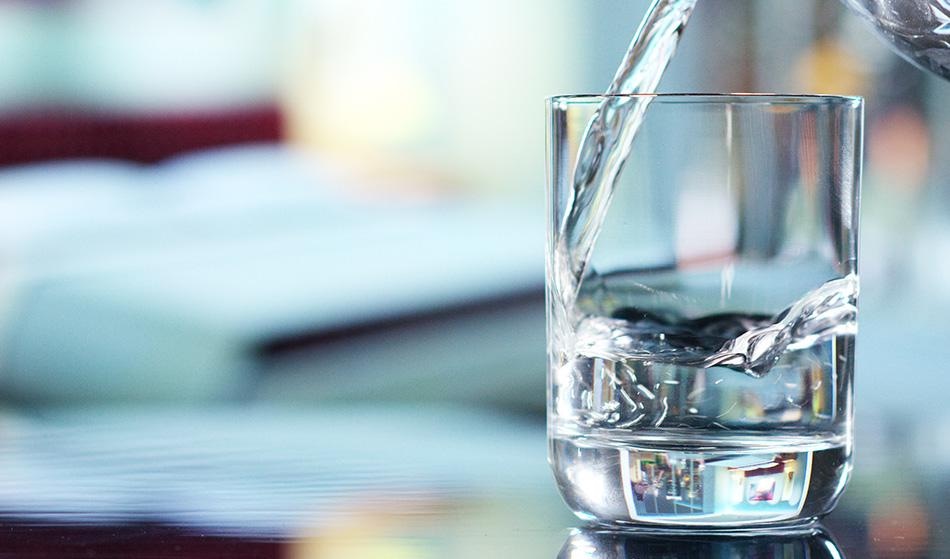
HQuality / Shutterstock
Water purification has applications in drinking water resources, wastewater treatment, biomedicine, food industry, and the life sciences. The industrial revolution, subsequent pollution, and climate change have rendered freshwater bodies unfit for drinking. Various water treatment technologies have come to try and aid this problem. However, most of them pose challenges such as high-cost, resource-intensive, and inaccessible locations.
Nanotechnology in Water Purification
‘There’s plenty of room at the bottom’ - the scientifically prophetic lines from Richard Feynman, bringing about the nanotechnology revolution also seem to have some answers for water purification issues. Nanotechnology inspired by biological organisms, which are highly efficient in ‘work’, have brought about better systems for water purification.
Membrane-based water purification is an energy- and waste-efficient method to remove molecular pollutants. ‘Increased water throughput, high filter efficiency, and high molecular loading capacity’ are the primary targets for designing water-membrane based purification. A myriad of chemical modifications of polymer membranes have been in the market; however, mimicking nature to use multi-layer architecture has million years of trial for the proof of test! For example, we can learn from nature: rain falling on the earth is perfectly cleansed off all contaminants and we have pure groundwater in wells and tanks for our use. Likewise, many organisms and cellular organelles are harvesting, transporting and re-cycling water discarding the contaminants and salts.
Aquaporin Incorporated Biomimetic Membranes
Biomimetic block copolymer membranes mimic biological membranes. Aquaporins, a naturally occurring water channel shows better water permeability than chemically designed membranes. Aquaporins with carbon nanotubes are used in water filtration due to their high water flux; the downside is they are expensive. Recent research shows aquaporin incorporated biomimetic membranes had excellent separation performances and robust structures. Such studies only emphasize the need for further research in this direction to improve the technology.
The world’s first nanochemistry based water filter for pesticide removal was developed by Prof T Pradeep at the Indian Institute of Technology Madras, India. He has used a unique family of nanocrystalline metal oxyhydroxide-chitosan granular composite materials for affordable point-of-use water purification. Chitosan is obtained by treating the chitin shells of shrimp and other crustaceans. Using nanotechnology, his group has developed many clean water technologies, which is estimated to have reached about 7.5 million people.
Frugal science based on nanotechnology can make a lasting impact on society
Prof T Pradeep, (PNAS, 2013).
Scientists from Tufts University and Massachusetts Institute of Technology, have optimized a biomimetic route to synthesis the multi-layer nanoporous membrane structure to permeate water molecules while selectively filter our molecular contaminants. Silk nanofibril (soft nanopores) and hydroxyapatite (hard nanobuilding blocks for structure support) have been used to fabricate highly ordered multi-layer membranes with nanoporous features by combining protein self-assembly and in situ biomineralization.
Amphiphilic building structure via self-assembly, mesoporous support materials templates for advanced oxidation processes, biomimetic membranes, and new carriers for immobilization of bacteria are some of the bio-mimetic nanotechnologies explored towards water purification.
Microorganisms like bacteria and archaea are used in controlled environments such as bioreactors or constructed wetlands, to breakdown the pollutants or transform heavy metals or organics, usually poisonous and harmful, into non-toxic substances. Such water purification is the direct involvement of microorganisms. These microorganisms are immobilized on a biofilm, porous polymer matrix or mesoporous support materials to increase their viability and also enhance efficiency.
Conclusion
Biomimetic nanotechnology is a promising technology for water purification - in these tough times of climate change and water crisis - solution-based approaches are just around the corner.
References
- Design and function of biomimetic multilayer water purification membranes
- Bioinspired Materials for Water Purification
- Biopolymer-reinforced synthetic granular nanocomposites for affordable point-of-use water purification
- Biomimetic Multilayer Nanofibrous Membranes with Elaborated Superwettability for Effective Purification of Emulsified Oily Wastewater
- Layer-by-Layer Assembly of Aquaporin Z-Incorporated Biomimetic Membranes for Water Purification
Disclaimer: The views expressed here are those of the author expressed in their private capacity and do not necessarily represent the views of AZoM.com Limited T/A AZoNetwork the owner and operator of this website. This disclaimer forms part of the Terms and conditions of use of this website.